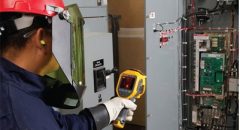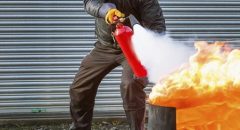F & G Mapping 3D vs 2D: A Comprehensive Guide for Industrial Safety
A clear, practical guide to compare 2D and 3D fire & gas mapping techniques in industrial facilities and help you choose the right approach.
What is F & G Mapping?
Definition of Fire & Gas (F&G) Mapping
Fire & Gas (F&G) mapping is an engineering study used to determine optimal placement of fire, flame, gas, or toxic detectors across industrial facilities. It helps ensure that any credible fire or gas release is detected early enough to trigger alarms or mitigation systems.
Purpose and Scope in Industrial Facilities
The purpose of F&G mapping is to achieve adequate detector coverage, improve safety performance, optimize the number of sensors, and maintain compliance with corporate safety philosophies and industry standards. It supports risk reduction in oil & gas, petrochemical, and other hazardous industries.
Key Standards and Guidelines
F&G mapping follows standards such as ISA TR84.00.07 and related international guidelines for evaluating fire, flammable gas, and toxic gas system effectiveness.
2D F & G Mapping: Overview & Workflow
What Constitutes a 2D Mapping Study
A 2D mapping study is performed on flat plan drawings (2D layouts) that represent a single elevation of the facility. It analyzes detector placement and estimated coverage without considering full height or obstructions.
Typical Workflow Steps for 2D Mapping
- Gather plot plans, P&IDs, and layout drawings.
- Place detectors based on spacing rules and zones of influence.
- Identify coverage zones using one or more horizontal planes.
- Review and adjust placements to close coverage gaps.
Advantages and Limitations of 2D Mapping
Advantages: Easy to conduct, fast turnaround, lower cost.
Limitations: Lacks elevation accuracy, ignores structural obstructions, and may misrepresent real-world detector coverage.
3D F & G Mapping: Overview & Workflow
What Constitutes a 3D Mapping Study
3D mapping involves creating a full three-dimensional model of the plant, including structures, equipment, and piping. The analysis evaluates how detectors “see” potential fire or gas releases within the actual geometry.
Workflow Steps for 3D Mapping
- Build or import a 3D model of the facility.
- Define hazard sources and performance targets.
- Place detectors in 3D space and simulate coverage.
- Identify blind spots, optimize layout, and generate coverage reports.
Enhanced Benefits of 3D Mapping
3D mapping provides realistic and precise coverage data, considers height variations and obstructions, and allows engineers to reduce unnecessary detectors while improving safety and cost efficiency.
2D vs 3D Mapping: Comparative Analysis
Key Differences (Geometry, Detector Coverage, Obstructions)
- Geometry: 2D uses flat layouts; 3D integrates all dimensions for more accuracy.
- Coverage: 3D reveals blind spots behind structures or at different elevations.
- Obstructions: 3D accounts for walls, vessels, and equipment blocking line of sight.
Performance Evidence
Studies show that 3D mapping often results in significantly better detector coverage than 2D mapping, which may overlook critical areas due to simplified geometry.
Cost, Time, and Resource Implications
2D mapping is faster and cheaper to start but may lead to over- or under-design. 3D mapping takes longer initially but yields lower lifecycle costs through optimized detector count and reduced maintenance.
When 2D May Suffice vs When 3D is Essential
2D mapping works well for small, flat, or low-risk facilities. 3D mapping is essential for complex plants with multiple elevations, heavy equipment, or high hazard potential.
Implementation Considerations & Best Practices
Data Requirements (Plot Plans, P&IDs, 3D Models)
Accurate and up-to-date input data—such as plot plans, P&IDs, and 3D CAD models—is vital for reliable mapping results. The quality of data directly impacts the accuracy of the study.
Detector Types, Mounting Heights, and Voting Logic
The mapping process should account for detector technology (point, open-path, flame, or gas), installation heights, and voting logic (like 2oo3) for alarm reliability.
Ensuring Compliance and Alignment with Safety Philosophy
Mapping should reflect the facility’s safety philosophy and regulatory standards. It should demonstrate that risks are reduced to ALARP (As Low As Reasonably Practicable).
Common Pitfalls and Mitigation
Common issues include outdated drawings, ignoring obstructions, or relying only on thumb rules. Regular updates, validation, and verification with site surveys mitigate these pitfalls.
ROI, Risk Reduction & Strategic Value
How Mapping Supports ALARP (As Low As Reasonably Practicable) Approach
Effective F&G mapping ensures that fire and gas detection systems meet defined performance targets, demonstrating risk reduction within acceptable limits.
Quantitative Benefits: Reduced False Alarms, Optimized Detector Count, Lifecycle Cost Savings
3D mapping often identifies redundant detectors, reducing capital costs and minimizing false alarms, while improving coverage efficiency and lowering maintenance costs.
Integrating Mapping into HSE Management and Engineering Strategy
Integrating F&G mapping into broader HSE and engineering frameworks ensures continuous improvement, risk visibility, and proactive management of plant safety systems.
Choosing a Qualified Partner (Why Aura Safety Risk Consultant)
What to Look for in an F&G Mapping Consultant
- Proven experience in F&G detection design and mapping studies.
- Use of validated software tools and best-in-class engineering practices.
- Knowledge of international standards and safety philosophies.
Our Value Proposition
Aura Safety Risk Consultant provides comprehensive HSE management and engineering consultancy services. We combine technical expertise with sustainability-driven design to help industries achieve safer, more compliant, and cost-efficient operations.
Contact Details and Next Step
Contact Number: +919999402106
Connect with our team to discuss your facility’s requirements and initiate your F&G mapping project.
Go to the Contact us page & fill out the form; our team will contact you.
Summary & Next Steps
Recap of Key Takeaways
- F&G mapping optimizes detector layout and enhances plant safety.
- 2D mapping is simpler but limited; 3D offers higher precision and value.
- Quality input data and expert review are essential for reliable results.
- ROI includes fewer detectors, lower maintenance, and improved coverage.
Recommended Action Plan for Your Facility
- Assess plant complexity and current detection coverage.
- Gather and validate drawings and process data.
- Select the appropriate mapping approach (2D or 3D).
- Partner with a qualified consultant.
- Implement optimized layouts and review periodically.
How to Initiate Your F&G Mapping Study
Reach out to Aura Safety Risk Consultant via phone or website to start your mapping study and strengthen your facility’s fire and gas detection strategy.
What we offer
Our Services
Identify, evaluate, and control process hazards with expert risk assessments, ensuring safe, reliable, and compliant industrial operations.

Identify, evaluate, and control process hazards with expert risk assessments, ensuring safe, reliable, and compliant industrial operations.

Implement site safety plans, audits, and training to prevent accidents, ensuring safer construction environments and regulatory compliance.

Design, engineer, and audit fire protection systems ensuring reliable performance, asset safety, and adherence to national safety standards.

Empowering workforce with certified HSE, fire, and industrial safety training programs for skill development and regulatory competence.

Create immersive, interactive VR safety training modules for realistic learning experiences in hazard recognition and emergency preparedness.
How it works
Industry Consultation
Project Scoping & Industry Brief
Service Selection
Site Visit & Inspection
Audit & Analysis
Report Submission & Discussion
Frequently Ask Question
Geographic coverage relates to detector field of view; scenario coverage evaluates detector response to actual hazard situations.
Not mandatory, but recommended for complex or high-risk facilities. Simple layouts may justify a 2D approach.
Whenever process changes occur or periodically as part of safety reviews.
It greatly reduces them by modeling real geometry and obstructions.
Targets depend on risk levels; many projects aim for over 90% effective coverage
Yes, both 2D and 3D mapping can be applied to existing facilities to optimize detector placement.
While it requires more setup, it delivers better coverage, lower false alarms, and long-term savings.
